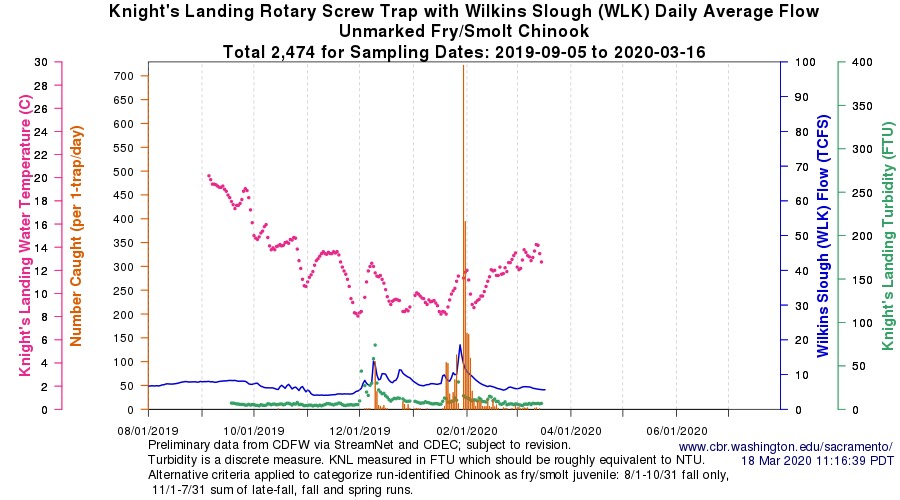One of the ramifications of dry conditions in winter 2020 has been the need to cut Delta exports to protect salmon and smelt listed under the state and federal endangered species acts. Lack of rain has led to reduced Delta inflow and outflow (Figure 1), which in turn has required reductions in south Delta exports (Figure 1), per the state’s 2009 incidental take permit and the 2019 federal biological opinions.1
The state permit requirement is prescribed to protect longfin smelt, which need protection under the present circumstances (Figures 2 and 3). The permit’s mitigation prescription (Figure 4) is to limit exports by limiting how negative flows in Old and Middle River (OMR) in the central Delta can get. Under the permit, negative OMR flows have generally been limited as early in the year as February in dry years like 2020; this limits exports and maintains Delta outflow. OMR flows were limited this winter (Figure 5). The mid-February survey (Figure 6) indicated a continuing risk that smelt larvae would be drawn into the central Delta if exports were increased. Exports have in fact increased (Figure 1) and OMR flow has become more negative (Figure 5) in March, increasing the risk to smelt despite being within limits set (Figure 4). March surveys should portray the effect of the increased risk factors.
The new federal take permits (BOs) are supposed to protect listed winter-run and spring-run salmon, Delta smelt, and steelhead, as well as the essential habitat of all the salmon, whose young are found in large numbers in the Delta in winter (Figure 7). Protections for these fish under the new BOs are vague at best.
Meanwhile, the state is in the process of developing a new incidental take permit that will cover winter-run and spring-run Chinook salmon and Delta smelt as well as longfin smelt. The risks to Delta fish are real. To be effective, the new ITP at minimum should not let spring outflow from the Delta fall below 10,000 cfs, and it should require maintaining February OMR levels during periods of low Delta inflow at the levels they were in February 2020 (Figure 5). This greater level of export restrictions should be required in each year with low Delta inflows until such time as the longfin smelt have grown out of the larval stage and moved downstream into the Bay. Even this level of protection may not protect the population from significant losses.

Figure 1. Delta outflow and exports in winter 2020. TRP=federal exports , HRO=state exports, DTO=outflow, FPT=Freeport Sacramento River inflow.

Figure 2. The catch density distribution of longfin smelt larvae in early February 2020 Smelt Larva Survey. Red arrow denotes direction of net flow in central and south Delta toward south Delta export pumping plants during survey period.

Figure 3. The catch density distribution of longfin smelt larvae in early February 2012 Smelt Larva Survey. Red arrow denotes direction of net flow in central and south Delta toward south Delta export pumping plants during survey period.

Figure 4. Permit Condition #5.2 from 2009 state longfin smelt incidental take permit.

Figure 5. Combined Old and Middle River flows in winter 2020.

Figure 6. The catch density distribution of longfin smelt larvae in mid-February 2020.
Source: Smelt Larva Survey.

Figure 7. Daily Catch of juvenile salmon upstream of Delta at Knight’s Landing fall-winter of water year 2020.
